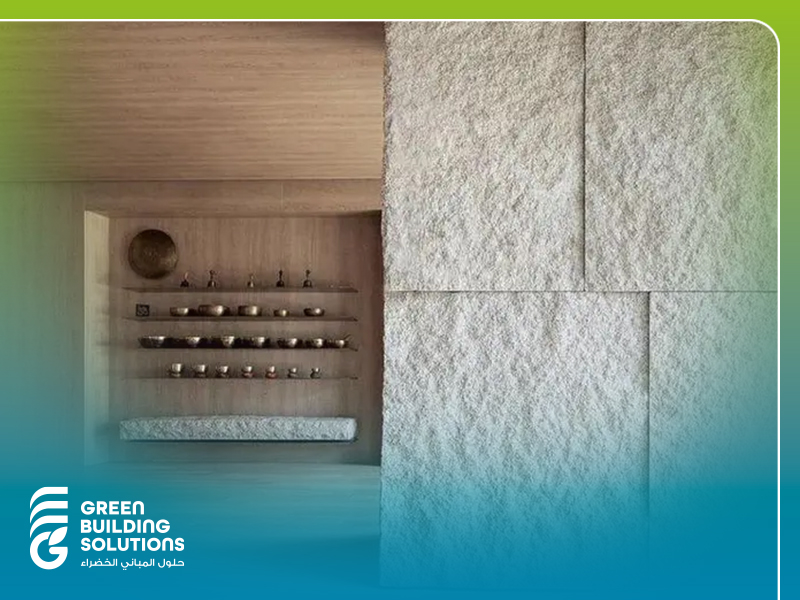Treated Clay Panels MCM: A Modern Solution for Sustainable Architecture

In the modern world of construction, building materials are evolving to meet the growing demand for sustainability and energy efficiency. One of the most innovative and eco-friendly materials gaining traction in the industry is Treated Clay Panels MCM. These eco-friendly clay panels offer a perfect blend of durability, flexibility, and design versatility, making them an ideal choice for green building solutions for energy-efficient projects.
Whether you are looking for heat-resistant façade cladding solutions for hot climates or eco-friendly interior and exterior design solutions, treated clay products provide a sustainable and effective alternative to traditional materials. In this article, we will explore what MCM treated clay products are, their key benefits, applications, and how they compare to traditional materials in modern construction.
What Are MCM Treated Clay Products?

MCM Treated Clay Products refer to clay sheets that have been treated with advanced technologies to enhance their durability and performance. MCM, which stands for Modified Clay Materials, represents a new generation of treated clay panels designed to meet the demands of modern architecture. These panels are made from natural clay, but they are processed using state-of-the-art techniques that improve their strength, flexibility, and resistance to environmental factors such as heat, moisture, and wear.
The treated clay solutions are versatile, lightweight, and designed for a variety of applications, from facade cladding to interior design elements. They are an excellent choice for sustainable architecture, providing both functional and aesthetic benefits to buildings of all kinds.
Find out more about: Top Green Building Solutions Provider in Saudi Arabia
Why Are They Considered Modern Building Solutions?
The demand for more sustainable and energy-efficient building materials has led to the rise of MCM treated clay products. These products are considered modern building solutions for several reasons:
- Eco-Friendly Materials: Treated clay products are made from natural resources that are abundant and easy to recycle. This makes them a green building solution that aligns with the principles of sustainability.
- Energy Efficiency: As part of green building solutions for energy-efficient projects, MCM sheets offer superior insulation properties, helping to reduce the need for heating and cooling systems. This is especially important in hot climates where heat-resistant façade cladding solutions are crucial to maintain indoor comfort.
- Durability: MCM treated clay products are highly resistant to environmental factors such as temperature fluctuations, UV radiation, and moisture, making them an ideal choice for facade cladding systems in both residential and commercial buildings.
- Design Flexibility: Unlike traditional materials like stone, treated clay panels offer greater flexibility in terms of design. They can be molded into different shapes, sizes, and finishes, allowing architects to achieve innovative and modern designs.
Learn more about: PHOMI Clay Panels: The Complete 2025 Guide to Eco‑Friendly Wall Solutions
Key Benefits (Flexibility, Lightweight, Weather Resistance, Eco-Friendly)
1. Flexibility
One of the standout features of MCM treated clay products is their flexibility. These flexible clay products can be shaped to fit a wide range of design requirements. Whether you are designing curved or angular facades, treated clay panels can be easily adapted to meet your vision. This flexibility also extends to interior design, where these materials can be used for walls, ceilings, and columns.
2. Lightweight
Treated clay products are significantly lighter than traditional materials like stone and concrete. This lightweight construction material reduces the load on building structures and simplifies installation. The ease of handling and transporting MCM sheets also results in cost savings and faster project completion times.
3. Weather Resistance
MCM treated clay panels are designed to withstand extreme weather conditions. Whether it’s high heat, rain, or humidity, treated clay solutions maintain their integrity over time. This makes them an excellent choice for heat-resistant façade cladding solutions for hot climates, ensuring that buildings remain comfortable and energy-efficient.
4. Eco-Friendly
As eco-friendly materials, treated clay panels are a sustainable choice for modern buildings. The production process uses fewer resources than traditional materials, and the panels themselves are recyclable at the end of their life cycle. This contributes to reducing the environmental impact of construction projects and helps achieve sustainability goals.
Read the full article on: Econiclay Display Panels by Green Building Solutions
Applications in Facades and Interiors
MCM treated clay panels are versatile and can be used in a wide variety of applications, both for facades and interior design:
1. Exterior Facades
Treated clay panels are widely used for facade cladding systems due to their durability and aesthetic appeal. They are ideal for creating sleek, modern exteriors that stand the test of time. Whether used in commercial buildings or residential properties, MCM sheets provide a beautiful, sustainable, and heat-resistant option for building facades.
2. Interior Walls and Design Elements
In addition to facade cladding, treated clay products can be used for interior walls, ceilings, and columns. Their flexibility allows for creative design solutions, and their natural thermal properties make them ideal for creating comfortable living and working environments. Eco-friendly interior and exterior design solutions are often achieved using MCM treated clay products, enhancing both the aesthetic and functional performance of spaces.
3. Sustainable Building Solutions
The use of MCM treated clay panels is in line with green building solutions for energy-efficient projects, as these materials contribute to better insulation and energy performance. Their low environmental impact makes them an excellent choice for sustainable architecture, helping buildings achieve higher levels of sustainability certification.
Get detailed insights on: How to Choose the Right Façade Material?
Difference Between MCM and Traditional Materials

MCM treated clay products differ from traditional materials like stone and wood in several key areas:
- Weight: MCM sheets are significantly lighter than natural stone or concrete, which reduces the structural load on the building and makes installation easier.
- Sustainability: While stone alternatives like marble may have environmental costs related to extraction, treated clay solutions are made from natural, recyclable materials that are less resource-intensive to produce.
- Design Flexibility: MCM treated clay panels offer more design flexibility than stone or wood. They can be customized into various shapes, colors, and finishes to meet specific architectural requirements.
- Energy Efficiency: Treated clay products offer superior insulation properties compared to traditional stone, contributing to more energy-efficient buildings.
Discover more about: Green Building Certifications: The Ultimate Guide to Sustainable Construction in 2025
FAQs about Treated Clay Panels MCM
- Are MCM treated clay panels suitable for both exterior and interior use?
Yes, MCM sheets are versatile and can be used for both facade cladding and interior design applications, offering a seamless aesthetic across the building. - How do MCM treated clay panels help with energy efficiency?
Treated clay products provide excellent insulation, helping to regulate indoor temperatures and reduce the need for excessive heating and cooling. - Are MCM treated clay products environmentally friendly?
Yes, MCM treated clay panels are made from natural, recyclable materials and have a smaller carbon footprint compared to traditional materials like stone or wood. - What makes MCM treated clay products better than stone or wood?
MCM treated clay products are lighter, more energy-efficient, and offer greater design flexibility than stone or wood, making them an excellent choice for modern sustainable architecture.
5. What are the best installation services for clay panels, wood, and stone alternatives?
Clay panel installation services focus on eco-friendly, durable, and customizable façade systems. Professional teams ensure accurate fitting, weather resistance, and aesthetic finishing compared to traditional wood and stone cladding.
6. Why choose eco-friendly clay panels for sustainable architecture?
Eco-friendly clay panels reduce energy consumption, improve thermal insulation, and lower carbon emissions. They are also recyclable and provide architects with sustainable design flexibility.
7. What is included in the professional installation of green building façade systems?
Professional façade installation includes site preparation, panel fixing, insulation layers, and sealing against moisture. Experts ensure compliance with green building standards and long-lasting performance.
8. Are there heat-resistant façade cladding solutions for hot climates?
Yes. Clay panels are naturally heat-resistant and keep indoor spaces cooler. They outperform traditional wood and stone by reducing heat transfer and lowering air conditioning costs.
9. What are first generation treated clay panels?
First-generation treated clay panels are enhanced with protective coatings to increase durability, resistance to UV rays, and longer lifespan in harsh weather conditions.
10. How do innovative building materials improve modern construction?
Innovative materials like clay panels, composite façades, and smart cladding reduce maintenance costs, improve sustainability, and allow architects to design energy-efficient buildings.
11. What is façade troubleshooting and maintenance?
Façade troubleshooting identifies issues such as cracks, water leakage, or color fading. Regular maintenance extends the life of clay, stone, and wood alternatives while preserving their original appearance.
Treated Clay Panels MCM are transforming the way we think about building materials. With their exceptional energy efficiency, flexibility, and sustainability, these panels are an ideal solution for modern architecture.
Whether you’re designing a new building or retrofitting an existing structure, MCM treated clay products provide the perfect combination of form and function.
If you are looking to incorporate green building solutions for energy-efficient projects, GBS offers installation services for clay panels, wood, and stone alternatives. Contact us today to learn how we can help you create a sustainable, eco-friendly building that aligns with your architectural goals.
